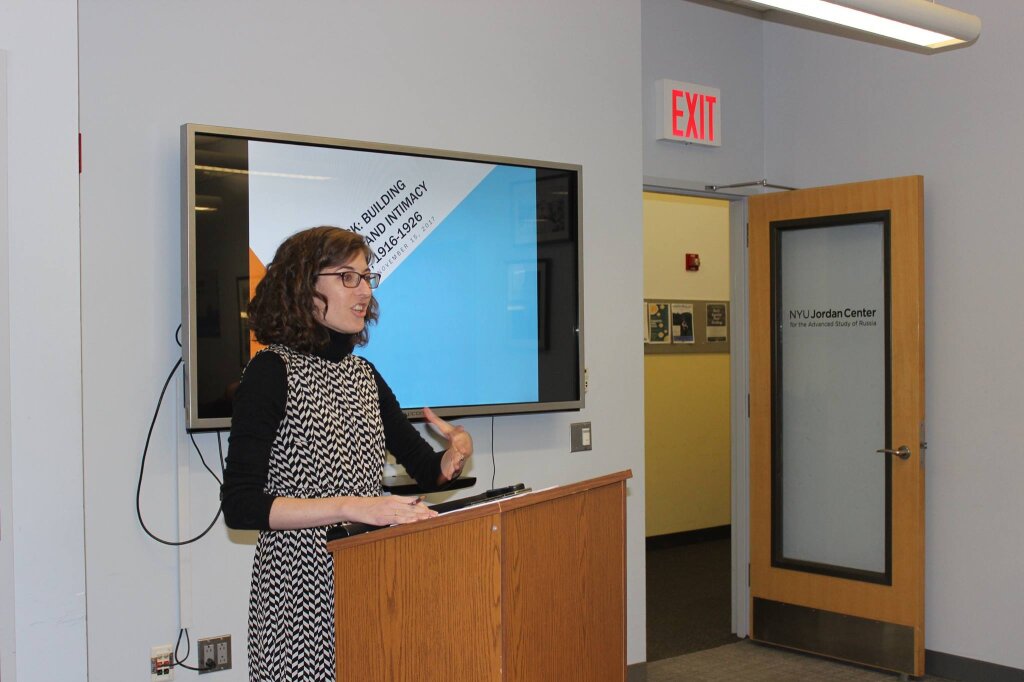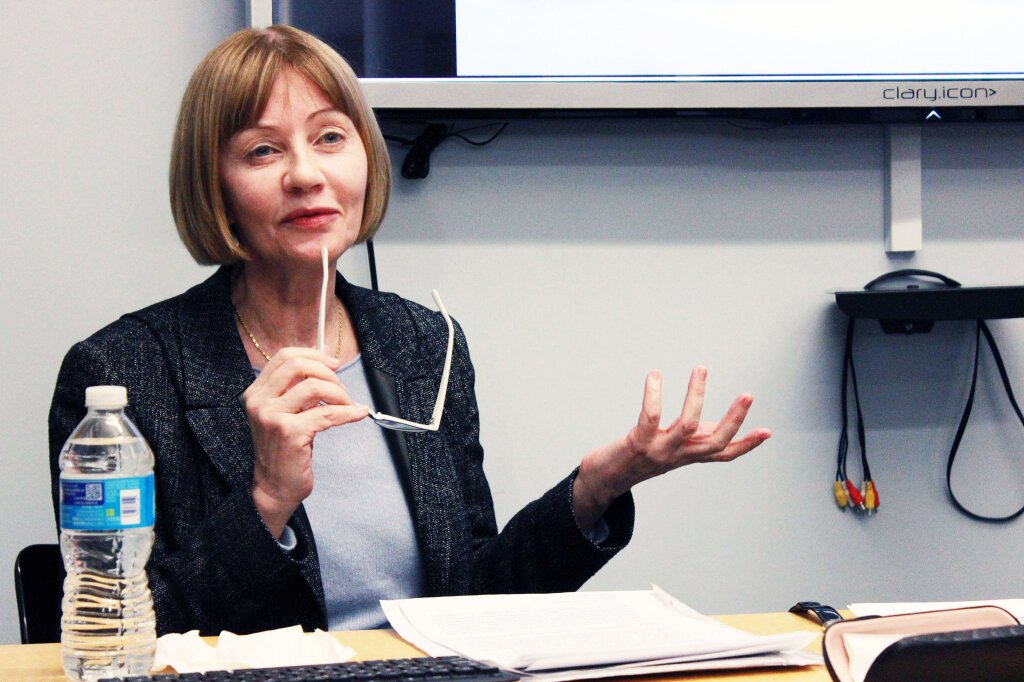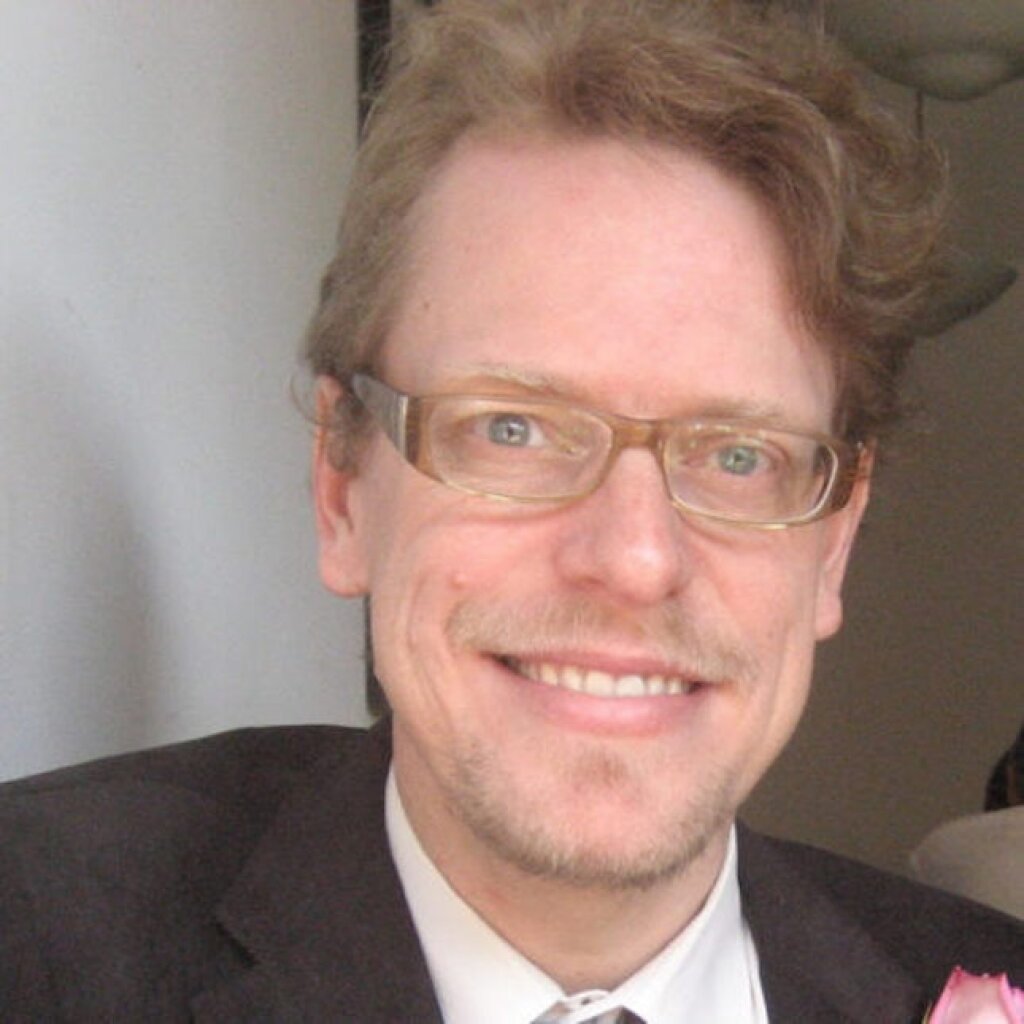Watch the event video here
On November 15th, the Jordan Center hosted a lecture entitled, “Taking Stock: Building Inventories and Intimacy in Moscow, 1916-1926”, the third event in the lecture series, “100 Year Anniversary of the 1917 Revolution.” The talk was given by Anne O’Donnell, Assistant Professor of History and Russian and Slavic Studies at NYU, and was co-sponsored by the NYU Department of History.
The difficulty of taking inventory of the physical world represented a central problem during the first years of socialism in the Soviet Union. Understanding what resources existed and how to find them presented a challenge, particularly because such resources related to questions of political representation for the new regime. O’Donnell’s talk discussed how the leaders of the new Soviet regime approached the issue of property within the context of a planned economy and the resulting experiences of “dispossession” felt by many members of Soviet society.
Lack of archival papers relating to the study of the built environment of the pre-revolutionary period functioned as a major challenge to the distribution of property. The Bolsheviks were unsure of how to approach the huge amount of social labor that lay before them. Lenin in particular saw the significance of this task, referring to socialism as a system of “accounting.” The idea of buildings as “resources” shaped the Bolsheviks’ attitude toward property. Objectively speaking, the built environment is not a natural resource. Nevertheless, the Bolsheviks treated it “as a new substance”, perhaps reflecting their mission to give birth to a new society. Changing perceptions of property were also reflected in the unstable status suddenly taken on by living conditions. Renters attempted to break contracts, as money rapidly devalued following the Revolution, and the refugee crisis during World War I resulted in a huge influx of new people seeking housing. The first Moscow apartment law was enacted in 1916, prohibiting rent increases and evictions until the end of the war. Such developments spurred the establishment of union organizations and building committees, starting in 1917.
The Bolsheviks’ perception of the role of buildings transcended the literal definition of “housing.” They firmly believed that “property was not sacrosanct”, redistribution was necessary due to the lack of built space for the population, and that buildings themselves were “malleable.” This idea of built space as fluid led to nationalization of all property; all apartments with rent of 750 rubles/month were municipalized. In addition, all built space, starting in Petrograd, was redistributed and a “register of available living space” was created. The Central Housing and Land Soviet at first prioritized the distribution of vacant space and then subsequently transitioned to “concentration orders”, in which multiple families were forced into communal living arrangements. Thus, as O’Donnell pointed out, this housing project focused on the “exteriority” of buildings while disregarding the “particularit[ies]” of personal life. At the same time, while redistribution of space was often quite random, reinforcing a sense of “abstraction and homogenization” in living conditions, details about people’s private lives actually proved quite useful to the state. As O’Donnell noted, buildings were transformed into “sites for generating knowledge about people and their markers…that might help authorities read them.” One of the results of this project, then, was to “mobilize [a] politics of intimacy.” The more intimate information the state knew about its citizens, the better.
This housing project consequently drastically altered conceptions of space. The task of categorization was assigned to building committees, and by 1918 resettlement had become the norm. However, attempts by the Central Housing Department to create comprehensive accounts of all living space in Moscow were messy and problematic. The job of identifying free space was also handled by citizens themselves. Interestingly, such “accidental” information provided by citizens soon functioned as the “essence” of the Central Housing Department’s work and could be characterized as “transitory”; the impermanence of rights and distribution caused this process to repeat on a constant loop. Thus, such a process in effect “transformed buildings from non-renewable to renewable resources through shifting [and] redistribution.”
Yanni Kotsonis, Professor of History, Russian and Slavic Studies, asked why the Bolsheviks did not maintain the use of pre-revolutionary housing records and wondered if conditions would have been better if they had. O’Donnell responded, noting that the revolutionary process of the Bolsheviks “trump[ed] the norm-based process” that preceded it. Another question addressed the idea of the “bacchanalia of eviction”; how did this idea of “excess” fit into the demonstration of state power? O’Donnell stated that “expropriation present[ed] a sense of physical realness for the state.” Up until this point, the definition of the “state” was still quite fluid.



